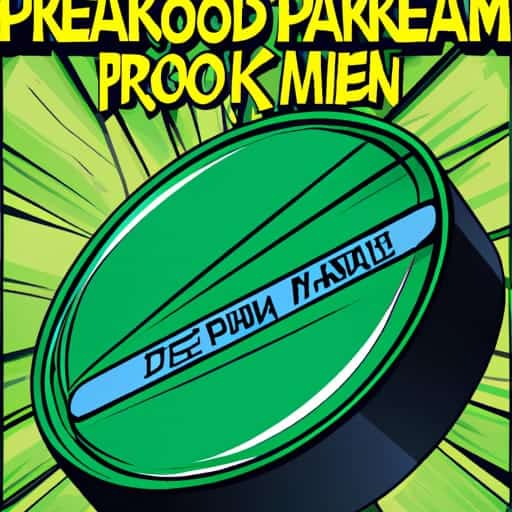Duloxetine: Side Effects, Interactions and More

Duloxetine is an antidepressant medicine that is also used to treat anxiety, diabetic peripheral neuropathy, fibromyalgia, and chronic musculoskeletal pain.
Its effectiveness for the approved conditions has been demonstrated by clinical trials, but it may not be suited for everyone and may have potential adverse effects and hazards.
To ensure maximum effectiveness, it is critical to discuss any problems with a healthcare practitioner and to adhere to the prescribed dosage.
Duloxetine – what is it and what are its uses?
Duloxetine is a medication used for the treatment of major depressive disorder and anxiety disorder. It is available in brand names such as Cymbalta, Yentreve
It is a serotonin and norepinephrine reuptake inhibitor (SNRI).
In August 2004, the U.S. Food and Drug Administration (FDA) said that duloxetine, sold under the brand name Cymbalta, could be used to treat depression. Soon after that, Cymbalta became the first and only drug in the United States that was officially approved to treat the pain of diabetic peripheral neuropathy.
The FDA approves duloxetine for the following conditions:
- Major Depressive Disorder (MDD) (1.1) Efficacy was established in four short-term and one maintenance trial in adults (14.1).
- Generalized Anxiety Disorder (GAD) (1.2) Efficacy was established in three short-term and one maintenance trial in adults (14.2).
- Diabetic Peripheral Neuropathic Pain (DPNP) (1.3)
- Fibromyalgia (FM) (1.4)
- Chronic Musculoskeletal Pain (1.5)
In the UK, As well as depression and anxiety, diabetic neuropathy and stress urinary incontinence in women, duloxetine is prescribed in other situations. The following two uses are off-license in the UK, that is to say a doctor can prescribe, but the drug has no official license for treating the conditions.
Duloxetine is also used to treat fibromyalgia. Fibromyalgia is a long-term condition that causes pain and stiffness in many muscles, trouble sleeping, and extreme tiredness.
Duloxetine, is also used to treat both chronic pain and low mood. It helps with nerve pain or pain sensitivity a lot of the time (also called central sensitisation). It relieves pain in a different way than most painkillers, and it is often given with other painkillers.
Brand Names for Duloxetine
- Cymbalta,
- Yentreve.
Duloxetine comes as capsules. You can only get it with a prescription.
Effectiveness of Duloxetine
In terms of effectiveness, duloxetine worked in more than 80% of cases.
A systematic review and meta-analysis published in the Lancet in 2018 showed that of 23 antidepressants, duloxetine came third in terms of effectiveness, but it was only the 15th best tolerated due to the side effects.

Duloxetine – Side effects of the medication
- Trouble falling asleep. Try taking duloxetine as soon as you wake up.
- Headaches. Make sure you get some rest and drink a lot of water.
- dizziness
- Vision blurred….
- Constipation
- Diarrhoea. …
- Getting sick (nausea or throwing up) or feeling sick…
- Dry mouth.
Some patients initially experience a minor weight loss when taking duloxetine as it can reduce appetite, but long-term use may result in a slight weight gain.
These side effects tend to get better over time and go away if you keep taking duloxetine.
Some teens and young adults who take duloxetine be experience agitation,
restlessness, irritability, or act in bizarre ways unusual ways. It may also make some young people think about killing themselves or act on those thoughts. It may also make them feel worse.
It is not licensed for people under 18 in the UK.
Precautions With Duloxetine
Pregnancy
In most time, duloxetine is not recommended during pregnancy because not much is known about how it might affect the baby. But if duloxetine helped you before you got pregnant, it might be appropriate to continue taking it while you’re pregnant. Talk to your doctor or midwife and get medical advice.
Urinary Problems
In the medical literature, it has been said that psychotropic drugs like olanzapine, sertraline, aripiprazole, and duloxetine may cause urinary retention. Most of the duloxetine-related cases were seen in groups with existing urinary problems.
Breast Feeding
You can take duloxetine while breastfeeding if your doctor or health visitor says your baby is healthy. Very little duloxetine gets into breast milk, and it has not been known for breastfed babies to have any side effects.
Bleeding problems
Selective serotonin reuptake inhibitors (SSRIs) and serotonin and norepinephrine reuptake inhibitors (SNRIs) are linked to bleeding risks (like GI bleeding and bleeding inside the brain) in people who have other risk factors or history of bleeding. This risk is mainly caused by the fact that SSRIs stop platelets from taking in serotonin, making clotting more difficult.
Your prescriber should be aware of any other medications that you take to take precautions to reduce
drug interactions. Aspirin, NSAIDs like naproxen or ibuprofen as well as blood-thinning tablets like warfarin and clopidogrel will increase bleeding risk.
drug interactions
The person prescribing duloxetine for you should be aware of any other medication you are taking as well as any over the counter or herbal remedies (such as St John’s Wort) so they can minimise or avoid negative drug interactions
Groups That Should Be More Cautious About Taking Duloxetine
- People with heart disease,
- being over 65,
- having a history of mania
- history of seizures,
- uncontrolled high blood pressure,
- high intraocular pressure,
- or being prone to angle-closure glaucoma.
Duloxetine overdose – what to do in such a case?
Fatal Duloxetine overdoses have been reported with as little as 1,000 milligrams. They usually cause sleepiness, coma, seizure, tachycardia, high or low blood pressure, and vomiting. Activated charcoal may be useful for reducing absorption.
If you or a friend accidentally overdoses on duloxetine, the amount might be small and there may be no symptoms. But it’s always best to get medical help.
If the person who has is becoming unwell, and showing symptoms of overdose immediately call an ambulance.
Toxicity
Serotonin Syndrome is a rare condition that can be triggered by increasing doses, changing medication or combining two or more medications or supplements that increase serotonin levels. Duloxetine is one of those medications.
An excess of serotonin can produce mild (shivering and diarrhea) to severe signs and symptoms (muscle stiffness, fever and seizures). If left untreated, severe serotonin syndrome can result in death.
Toxicity is a serious side effect that can occur when taking medication. It refers to the adverse effects of a drug on the body, which may include nausea, vomiting, drowsiness, confusion and even seizures.
If toxicity does occur, first aid measures should be taken immediately. These might include administering CPR if necessary or calling for an ambulance for help.
Elimination Half Life of Duloxetine
The half-life for getting rid of duloxetine is about 12 hours (range: 8–17 hours), and its pharmacokinetics are dose-dependent over the therapeutic range. Plasma concentrations usually reach a steady state after 3 days of dosing.
Withdrawal from Duloxetine
Stopping duloxetine suddenly can cause one or more of the following withdrawal symptoms: irritability, nausea, feeling dizzy, vomiting, nightmares, headache, and/or paresthesias (prickling, tingling sensation on the skin).
You may get these symptoms if there is more than one missed dose. Just remember to take your next dose and you should be fine.

Minimum Effective Dosage of Duloxetine
Duloxetine is a serotonin and norepinephrine reuptake inhibitor antidepressant which is used to treat major depressive disorder (MDD).
It is important to know the minimum effective dosage of duloxetine in order to avoid any possible side effects. The minimum effective dosage of duloxetine is 60mg per day. This dose should be taken as a single dose, with or without food, and should not be increased or decreased.
Major depressive disorder
60 mg one time a day.
Generalized anxiety disorder
At first, 30 mg once a day. If needed, increase to 60 mg once a day; maximum of 120 mg per day.
Conclusion: Is Duloxetine For You?
Duloxetine is an effective antidepressant, with over 80% of patients in some studies saying it helped their anxiety and depression, however, it does come with side effects. These side effects get better over time with the majority of people, but a lot of people drop out of taking the duloxetine before it has had an opportunity to really help them.
The bottom line is that with most people if you keep on taking duloxetine, the side effects will go away and you will get the benefit on your anxiety and depression. However for a small majority the side effects will not go away and you will need to talk to your doctor or take advice from a pharmacist about changing your medication.

Related Articles
5 Most Effective Antidepressants for Anxiety and Depression (and 3 you should avoid)
The Art, Science, and Magic of Prescribing Antidepressants
Is Venlafaxine A Good Medication for Anxiety and Depression?





